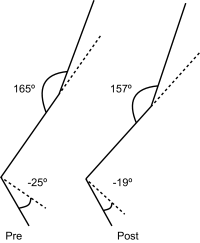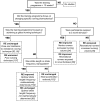Is There an Economical Running Technique? A Review of Modifiable Biomechanical Factors Affecting Running Economy
- PMID: 26816209
- PMCID: PMC4887549
- DOI: 10.1007/s40279-016-0474-4
Is There an Economical Running Technique? A Review of Modifiable Biomechanical Factors Affecting Running Economy
Abstract
Running economy (RE) has a strong relationship with running performance, and modifiable running biomechanics are a determining factor of RE. The purposes of this review were to (1) examine the intrinsic and extrinsic modifiable biomechanical factors affecting RE; (2) assess training-induced changes in RE and running biomechanics; (3) evaluate whether an economical running technique can be recommended and; (4) discuss potential areas for future research. Based on current evidence, the intrinsic factors that appeared beneficial for RE were using a preferred stride length range, which allows for stride length deviations up to 3 % shorter than preferred stride length; lower vertical oscillation; greater leg stiffness; low lower limb moment of inertia; less leg extension at toe-off; larger stride angles; alignment of the ground reaction force and leg axis during propulsion; maintaining arm swing; low thigh antagonist-agonist muscular coactivation; and low activation of lower limb muscles during propulsion. Extrinsic factors associated with a better RE were a firm, compliant shoe-surface interaction and being barefoot or wearing lightweight shoes. Several other modifiable biomechanical factors presented inconsistent relationships with RE. Running biomechanics during ground contact appeared to play an important role, specifically those during propulsion. Therefore, this phase has the strongest direct links with RE. Recurring methodological problems exist within the literature, such as cross-comparisons, assessing variables in isolation, and acute to short-term interventions. Therefore, recommending a general economical running technique should be approached with caution. Future work should focus on interdisciplinary longitudinal investigations combining RE, kinematics, kinetics, and neuromuscular and anatomical aspects, as well as applying a synergistic approach to understanding the role of kinetics.
Figures




Similar articles
-
Biomechanics and running economy.Sports Med. 1996 Aug;22(2):76-89. doi: 10.2165/00007256-199622020-00003. Sports Med. 1996. PMID: 8857704 Review.
-
Individual Responses to a Barefoot Running Program: Insight Into Risk of Injury.Am J Sports Med. 2016 Mar;44(3):777-84. doi: 10.1177/0363546515620584. Epub 2016 Jan 7. Am J Sports Med. 2016. PMID: 26744483
-
The influence of minimalist footwear and stride length reduction on lower-extremity running mechanics and cumulative loading.J Sci Med Sport. 2016 Dec;19(12):975-979. doi: 10.1016/j.jsams.2016.03.003. Epub 2016 Mar 17. J Sci Med Sport. 2016. PMID: 27107980
-
Contributions to the understanding of gait control.Dan Med J. 2014 Apr;61(4):B4823. Dan Med J. 2014. PMID: 24814597 Review.
-
Acute kinematics changes in marathon runners using different footwear.J Sports Sci. 2018 Apr;36(7):766-770. doi: 10.1080/02640414.2017.1340657. Epub 2017 Jun 22. J Sports Sci. 2018. PMID: 28641058
Cited by
-
Spatiotemporal and kinematic adjustments in master runners may be associated with the relative physiological effort during running.Front Sports Act Living. 2023 Oct 10;5:1271502. doi: 10.3389/fspor.2023.1271502. eCollection 2023. Front Sports Act Living. 2023. PMID: 37886221 Free PMC article.
-
Effects of Plyometric Training on Soft and Hard Surfaces for Improving Running Economy.J Hum Kinet. 2021 Jul 28;79:187-196. doi: 10.2478/hukin-2021-0071. eCollection 2021 Jul. J Hum Kinet. 2021. PMID: 34400998 Free PMC article.
-
Men's and Women's World Championship Marathon Performances and Changes With Fatigue Are Not Explained by Kinematic Differences Between Footstrike Patterns.Front Sports Act Living. 2020 Aug 6;2:102. doi: 10.3389/fspor.2020.00102. eCollection 2020. Front Sports Act Living. 2020. PMID: 33345091 Free PMC article.
-
Influence of Sex, Athletic Category and Athletic Level on Marathon Pacing Strategy: An Analysis of the Trinidad Alfonso EDP Valencia Marathon From 2014 to 2023.Eur J Sport Sci. 2025 Jul;25(7):e12329. doi: 10.1002/ejsc.12329. Eur J Sport Sci. 2025. PMID: 40531717 Free PMC article.
-
The Relationship Between Running Biomechanics and Running Economy: A Systematic Review and Meta-Analysis of Observational Studies.Sports Med. 2024 May;54(5):1269-1316. doi: 10.1007/s40279-024-01997-3. Epub 2024 Mar 6. Sports Med. 2024. PMID: 38446400 Free PMC article.
References
-
- Foster C. VO2 max and training indices as determinants of competitive running performance. J Sports Sci. 1983;1:13–22. doi: 10.1080/02640418308729657. - DOI
-
- Farrell PA, Wilmore JH, Coyle EF, et al. Plasma lactate accumulation and distance running performance. Med Sci Sports. 1979;11:338–344. - PubMed
-
- Tanaka K, Matsuura Y. Marathon performance, anaerobic threshold, and onset of blood lactate accumulation. J Appl Physiol Respir Environ Exerc Physiol. 1984;57:640–643. - PubMed
Publication types
MeSH terms
LinkOut - more resources
Full Text Sources
Other Literature Sources

